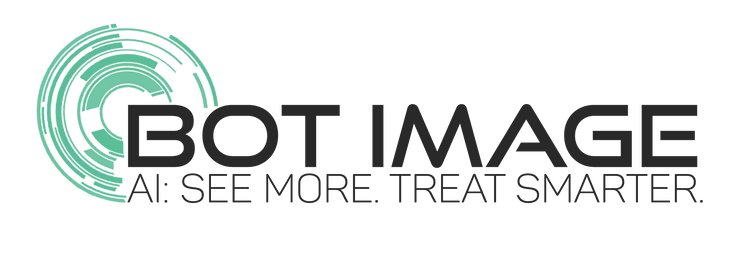
Blog
AI and Prostate Cancer – A Supportive Tool for Doctors, Not a Replacement

Prostate cancer diagnosis is getting smarter, faster, and more precise. That’s the promise of AI and prostate cancer research coming together—especially in MRI analysis. But AI is not here to replace physicians. It’s here to support them with sharper detection, fewer unnecessary procedures, and more time for patient care. This post explains how AI works in prostate MRI, why medical judgment remains essential, and how companies like Bot Image are helping doctors deliver better outcomes.
Key takeaways:
- AI improves prostate MRI detection and consistency, especially for early signs.
- Doctors remain central for clinical judgment, complex cases, and patient communication.
- Bot Image’s AI solutions help reduce false positives and streamline workflows.
- The future is collaborative: AI as a partner in everyday practice with strong ethical guardrails.
Understanding the Role of AI in Prostate Cancer Diagnosis
AI is particularly strong at finding subtle patterns in prostate MRI that can signal clinically significant cancer. Trained on thousands of images, AI systems learn to spot features linked to higher-grade disease, helping radiologists focus attention where it matters most.
How AI Works in MRI Cancer Detection
- Data-driven pattern recognition: AI models analyze T2-weighted imaging, diffusion-weighted imaging (DWI), and apparent diffusion coefficient (ADC) maps to flag abnormalities aligned with PI-RADS criteria.
- Probability maps and heatmaps: Many tools produce lesion probability maps, highlighting suspicious regions and aiding targeted review.
- Standardization: AI can bring more consistent scoring across readers and sites, which reduces variability in interpretations, particularly among less-experienced readers.
Example: In multi-center studies, AI tools have shown improvements in sensitivity for detecting clinically significant prostate cancer (Grade Group ≥2) while maintaining or improving specificity. Radiologists using AI assistance often identify more true-positive lesions on the first pass and complete reads faster.
AI’s Strength in Identifying Early Signs of Prostate Cancer
Early disease can be subtle—slight diffusion restriction, faint hypointensity, or small-volume lesions near challenging zones like the transition zone. AI excels at:
- Picking up low-contrast lesions that might be missed during busy clinics.
- Alerting to atypical presentations where human pattern recognition is less reliable.
- Providing consistent triage, so suspicious scans get priority for detailed review.
These strengths contribute to earlier, more confident detection—one of the biggest opportunities for AI and prostate cancer care.
Why AI Cannot Replace Doctors in Prostate Cancer Care

AI adds value, but it does not replace clinical expertise. Diagnosis and treatment decisions require a full view of the patient—history, comorbidities, preferences, and risk tolerance—plus nuanced judgment.
The Human Expertise Factor
- Context matters: PSA kinetics, digital rectal exam findings, family history, prior biopsies, and genomic tests all influence decisions.
- Trade-offs: Choosing active surveillance vs. biopsy vs. immediate treatment is not a binary algorithmic call.
- Accountability: Physicians integrate evidence, guidelines, and patient goals to craft a plan they stand behind.
Complex Cases Require Clinical Judgment
- Post-biopsy hemorrhage, prostatitis, and benign prostatic hyperplasia can mimic cancer on MRI.
- Prior therapies (e.g., radiation, focal ablation) alter tissue appearance; follow-up imaging demands experienced interpretation.
- Equivocal scans still require multidisciplinary review—urology, radiology, pathology—where human dialogue resolves uncertainty.
Patient Communication and Emotional Support
A flagged lesion is not a diagnosis. Patients need clear, empathetic explanations about risk, next steps, and options. Doctors build trust, help patients weigh benefits and harms, and guide them through anxious moments—roles AI cannot fill.
The Power of AI as a Diagnostic Partner
When integrated well, AI becomes a second set of eyes that never tires, improving accuracy and consistency while letting clinicians focus on complex reasoning and patient care.
Enhancing MRI Accuracy with AI Technology
- Higher sensitivity for clinically significant disease: AI helps focus on lesions more likely to need intervention.
- Consistency across readers: Standardized probability outputs help align interpretations in community and academic settings.
- Better lesion localization: More precise targeting supports fusion-guided biopsies and treatment planning.
Reducing False Positives and Unnecessary Biopsies
- Specificity gains: By learning patterns of benign conditions, AI can lower false alarms.
- Smarter triage: Scans with low-probability findings can be routed for routine review, while higher-risk cases get expedited, reducing unnecessary biopsies and patient anxiety.
- Resource efficiency: Fewer unwarranted procedures free up time and budgets for patients who need care most.
Example: In retrospective reviews, AI-assisted reads have reduced false-positive lesion calls and lowered rates of negative biopsies by guiding more accurate targeting—translating to fewer invasive procedures.
Supporting Doctors with Faster, Data-Driven Insights
- Time savings: Automated pre-reads, lesion marking, and structured reporting reduce turnaround time.
- Decision support: Integrated PI-RADS suggestions and risk scores support consistent, guideline-aligned reporting.
- Learning loop: With feedback from biopsy and pathology, AI models and clinicians both refine performance over time.
Bot Image – Advancing AI Solutions for MRI Cancer Detection
Bot Image is focused on practical AI that supports radiologists and urologists at the point of care. Their solutions are designed to fit into existing workflows while raising diagnostic confidence.
Company Mission and Commitment to Doctors
- Clinician-first design: Bot Image builds tools that augment, not replace, expert readers.
- Evidence-driven: The company emphasizes validation against multi-center datasets and real-world workflows.
- Reliability and safety: Continuous monitoring, model updates, and quality controls help maintain dependable performance.
Bot Image’s north star is simple: empower doctors to detect clinically significant prostate cancer earlier and more consistently, while preserving time for patient care.
How Bot Image’s AI Improves Workflow and Accuracy

- Seamless integration: PACS- and reporting-friendly outputs, including lesion probability maps and suggested PI-RADS categories.
- Standardized reporting: AI-generated measurements and structured fields reduce variability and speed up documentation.
- Collaboration tools: Clear visual overlays make it easy for radiologists to communicate with urologists during tumor boards and biopsy planning.
Real-World Success Stories in Prostate Cancer Detection
- Community hospital uplift: After deploying AI, a mid-sized hospital saw improved concordance with tertiary-center reads and fewer missed clinically significant lesions on follow-up.
- Fewer negative biopsies: A urology practice integrated AI-guided MRI review into its biopsy pathway, reporting a reduction in negative cores and tighter targeting of suspicious regions.
- Faster turnaround: A radiology group decreased average read times for prostate MRI by several minutes per case while maintaining or improving sensitivity.
These outcomes reflect a core theme in AI and prostate cancer care: better detection, smarter biopsy decisions, and improved efficiency without sacrificing quality.
The Future of AI and Prostate Cancer Diagnosis
AI’s role will keep expanding as models, datasets, and clinical pathways mature. The focus is not automation for its own sake, but meaningful improvements in patient outcomes.
Integration into Everyday Clinical Practice
- End-to-end pathways: From pre-read triage to biopsy planning and follow-up surveillance, AI will support each step.
- Training and credentialing: Radiology teams will use AI not only for reads, but also for education, calibrating interpretations across experience levels.
- Interoperability: Standards-based integration with PACS, RIS, and EHRs will make AI insights universally accessible.
Ethical Considerations and Patient Trust
- Transparency: Clear, explainable outputs (e.g., why a lesion was flagged) build confidence.
- Bias reduction: Diverse training data and ongoing performance audits help ensure equitable care across populations.
- Privacy and security: Robust safeguards protect patient data while enabling model improvement.
Ongoing Collaboration Between AI Developers and Medical Professionals
- Shared validation: Prospective, multi-center studies with biopsy-confirmed outcomes ensure tools deliver real clinical value.
- Feedback loops: Clinicians provide case-level feedback; developers refine models and interfaces accordingly.
- Guideline alignment: Close coordination with professional societies helps synchronize AI outputs with PI-RADS and evidence-based care pathways.
Moving Forward
AI and prostate cancer diagnostics are advancing fast, but the goal remains constant: timely, accurate, compassionate care. With AI as a diagnostic partner—and with companies like Bot Image focusing on clinician-centered tools—radiologists and urologists can detect significant disease earlier, avoid unnecessary procedures, and spend more time with patients.
Next steps:
- For radiologists: Pilot AI-assisted prostate MRI reads on a subset of cases and track sensitivity, specificity, and read time.
- For urologists: Collaborate with radiology on AI-informed biopsy planning and outcomes tracking.
- For administrators: Evaluate workflow integration, cost-benefit, and quality metrics to guide deployment.
- For patients: Ask your care team how AI supports your imaging and decision-making process.

